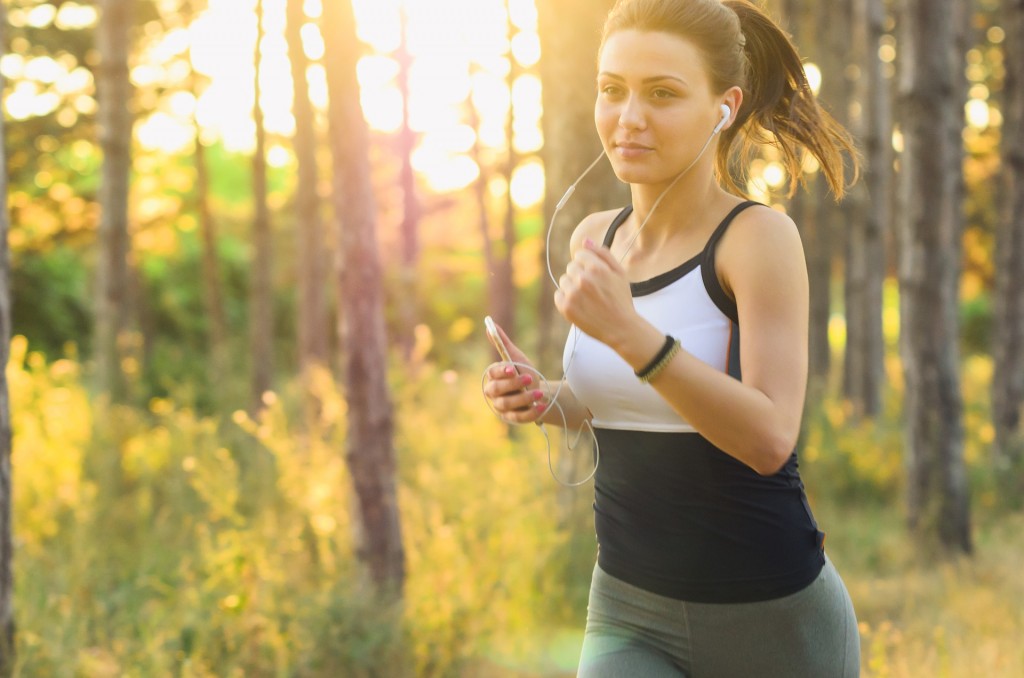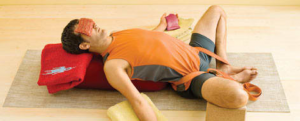By. Danél Lombard, MPT, MA, E-RYT
You don’t have to look far to find ways in which we can take better care of our hearts by improving our daily eating and exercising habits. From heart healthy foods to high intensity interval training, ways to improve heart health seems endless. As a physical therapist, it’s easy to point out what types of exercises should be part of your weekly routine. But as an integrative physical therapist, I’d like to go one level deeper…how does your lifestylefactor into your heart’s health? Even more importantly, what is your attitudetowards your health and your heart?
Let’s start with exercise.
The American heart association recommends 30 min of moderate intensity-training 5 times a week for a healthy heart and cardiovascular system. This type of training is considered endurance training, or aerobic exercise (“with oxygen” as opposed to anaerobic exercise “without oxygen”). It can include anything from gardening to brisk walking to jogging, depending on your level of health and age. As long as you have your heart rate consistently elevated for 30 minutes at a moderate intensity, it is considered aerobic exercise and you are improving your body’s ability and efficiency to get oxygen from your lungs to the muscle cells. According to the Cleveland Clinic, the benefits of aerobic exercise are:
- Improved cardiovascular conditioning
- Decreased risk for heart disease
- Lowered blood pressure
- Increased HDL or “good” cholesterol
- Improved control of blood sugar
- Improved lung function
- Decreased resting heart rate
- Assists weight management and weight loss
Another very effective form of exercise is high intensity interval training (HIIT). It has been proven to gain cardiovascular benefits faster, and in a shorter time. Instead of consistent 30 minutes of moderate intensity exercise, one exercises for less time at varying intervals of intensity. For instance, your interval training may consist of alternating between 20 seconds of effort followed by 10 seconds of recovery for a total of just 4 minutes (the Tabata method). This is just one example. Interval times and activities can vary, and depending on the variation of effort and rest, this type of exercise can be aerobic, anaerobic, or most likely, a combination of both–a proven very effective way of increasing cardiovascular fitness.
One last form of exercise I want to talk about is yoga. You may have heard about the benefits of practicing yoga for heart health. Yoga has become a really broad subject, and you never really know what is referred to when someone says “yoga” unless it is defined. Therefore, I’d like to be clear. Even though yoga has changed from mostly a spiritual practice to more of a cardiovascular one in the past few decades here in the west, I would like to address the benefits of yoga that comes from slowing down, turning inward and practicing yoga as a moving meditation.
The practice of yoga postures strongly emphasizes the importance of focused deep breathing. In so doing, the parasympathetic nervous system is activated–the “rest and digest” system of the body. These days this system is mostly outweighed, or highly out of balance with the sympathetic nervous system–the system that has us ready for action, also known as our “fight or flight” system. In our modern society, all things stress related (i.e. our everyday lives) activate the sympathetic nervous system. This causes hormones such as cortisol and adrenalin to abound in the blood stream, always prepared to “fight” or “flee” that eminent danger of a deadline, or a meeting, or that person in our lives. You catch my drift. These hormones cause our blood vessels to constrict and hence play their part in high blood pressure, which is but one way that it contributes to heart disease.
In slowing down, breathing deeply and focusing our attention on the present moment of slow mindful movement in and out of yoga postures, we offset the effects of our daily stressful lives, and decrease the release of these stress hormones.
This brings me to my second point: Lifestyle.Who has time to slow down? We all want more bang for our buck, accomplish more in less time (hence HIIT has been such a big hit, pun intended). There’s a Zen saying that states: “You should sit in meditation for twenty minutes every day — unless you’re too busy. Then you should sit for an hour.” Point is if you can’t make your health part of your life, it will fall by the wayside. When people ask me what the best exercise is for them to do, I tell them the type of exercise they’ll do consistently. Find something that you love doing, from gardening, to dancing, to HIIT workouts, and it will be easy to stick to. Adjust your schedule to fit it into your day like you do taking a shower. And if your lifestyle includes a stressful job, something that is hard to change, at least find something to counteract some of it, like a yoga or meditation practice. Why? Because you love and appreciate your heart, which brings me to my last point. Attitude.
What’s your attitude towards exercise and healthy eating (diet has become such a loaded word that I choose to avoid it whenever I can)? If you view it as an inconvenience, but you know you shoulddo it you’re not alone. You feel the need to make healthier choices, but are also a bit opposed to it, perhaps even resentful of it. Who wants to change that convenient yet unhealthy fast food habit to still a growling stomach, or reconsider that nightly well-deserved wine-after-work routine? But let’s see if we can look at it with a different attitude.
Have you lately considered what your heart does for you from moment to moment? Learning how magnificently the body works is one of the main reasons I find myself in the health care field. Every moment of being alive truly is miraculous. So let’s consider for a moment, very simplistically, what our hearts do for us from one moment to the next…
- The heart pumps by contracting and relaxing the different parts of the heart muscle automatically and in perfect timing (the physiology of which is truly jaw-dropping), without requiring even as much as a thought.
- It has valves that open and close in perfect sequence and harmony in order for the pump to work efficiently.
- The rate at which the heart pumps increases and decreases in speed depending on the demand you place on it without you even being conscious of it most of the time.
- The heart makes sure that every single cell in your body gets enough oxygen to function properly, cells as close to the heart as the heart cells themselves, to the cells in the tips of your fingers and toes.
- It re-oxygenates blood that is returning “empty” from these cells by first pumping the blood to the lungs, and then sending it out to the rest of your body.
There’s a lot more to the physiology of the cardiovascular system as you may well know and how all the other systems are important in its function, but do you ever think about this? And if you do, don’t you stand in complete and utter awe of the magnificence of your body (and your heart)?
No matter what you demand from your body physically, your heart meets the demand to keep you alive.
So now, as you think about what your heart does for you, how do you feel about feeding it nutritious foods that don’t increase the demands on it? Or train it through exercise to be more efficient day to day? Find ways to eat and exercise through loving and appreciating your heart. Let heart love be at the front of your mind when you make moment-to-moment decisions, remembering that your heart works for you on a moment-to-moment basis, doing the most important job there is: keeping you alive, and as far as it’s capable, thriving.
I’m including a few heart opening, heart loving gentle and restorative yoga poses. As you take on these postures, practice gratitude and love for your body and your heart…
*please consult with your health care provider before doing these poses
**These poses and their instructions are found on the Yoga Journal website
- Cow Pose
Source: https://www.yogajournal.com/poses/cow-pose
Step 1
Start on your hands and knees in a “tabletop” position. Make sure your knees are set directly below your hips and your wrists, elbows and shoulders are in line and perpendicular to the floor. Center your head in a neutral position, eyes looking at the floor.
Step 2
As you inhale, lift your sitting bones and chest toward the ceiling, allowing your belly to sink toward the floor. Lift your head to look straight forward.
Step 3
Exhale, coming back to neutral “tabletop” position on your hands and knees. Repeat 10 to 20 times.
- Supported Reclining Bound Angle Pose
Source: https://www.yogajournal.com/practice/reclining-bound-angle-pose
To start, fold 3 blankets in quarters, and then in thirds. Place a bolster on the floor and put a folded blanket at one end, to pillow your head when you lie down. Put one block and one folded blanket on each side of your setup. (For more chest opening, place a second bolster on the floor under the first, crosswise, so that the top bolster is at an angle like a ramp.)
Now snuggle right up to the bolster until the end touches your sacrum. Sit up tall in Dandasana and place your legs in Baddha Konasana (Bound Angle Pose). Make a big loop with your yoga strap. Drop it over your head, reaching your arms through, as if you were putting on a T-shirt. Run the belt low across your sacrum and over your inner thighs. Make sure the tail of the strap is on the same side as your dominant hand (so if you are right-handed, the tail should be on your right). Now loop the strap over your ankles and then around your feet. With your dominant hand, pull the belt snug, but not tight, bringing your feet closer to your pelvis. The strap holds your feet and legs in position, so you don’t have to exert any muscular effort. There’s no need to pull the feet as far in as possible. Go just to the point where you feel a gentle stretch in the inner thighs, but no strain.
Put one block under each thigh so that your legs are well supported. Adjust the block placement to soften the intensity of the stretch in your inner thighs. Again, you do not want to go to your maximum point of stretch, but just shy of that. The sweet spot is different for different people, depending on how tight their hips are, but you are looking for a gentle sensation of opening, not a strong stretch. Lie back on the bolster. Arrange the blanket so that it feels comfortable under your neck and supports your head.
Slide your hands down to the top of your buttocks and smooth the flesh down in the direction of your feet. This will help create a sense of length and space in your low back and sacrum. If your low back feels uncomfortable, sit up and place another folded blanket on the floor just in front of the bolster to create a stairstep effect. Sit on the folded blanket, carefully lie back down, and see how this feels. The extra height provided by the blanket should lessen the curve in your back, and eliminate any strain. Take time to get the setup just right until you are comfortable.
Now position the other two folded blankets so that they are angled in the natural direction of your arms when they are relaxed by your sides.
3. Modified Fish Pose
Source: https://www.yogajournal.com/poses/modify-fish-pose-joy-contentment#gid=ci020756ab70202620&pid=modify-fish-pose-MTQ2MTgwODAwMjU3OTkyMTI1
Using a blanket,fold it in half lengthwise, and then roll the folded side over one or two times. Lie on the blanket placing the blanket roll along the lower edges of your shoulder blades. Your head can rest on the unfolded part of the blanket. This will give you a nice chest and shoulder opener. Let your feet fall open as you relax.
–
Danél Lombard is an Integrative Physical Therapist at the Akasha Center for Integrative Medicine. You can make an appointment with her by calling 310-451-8880 or emailing us at info@akashacenter.com





















